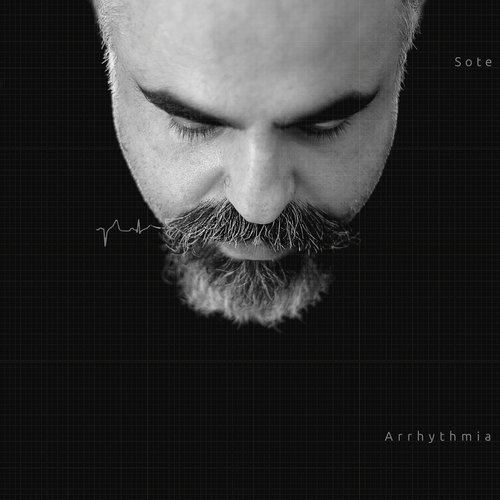Ata Ebtekar, aka Sote, is an Iranian-based computer musician, and is a scientist just as much as he is a cultural analyst through his music. Regurgitating broad musical forms into dense algorithmic works, Sote is primarily interested in how things work. His work sits in a strange crossroads between Xenakis, Actress and Lorenzo Senni; always geometrically minded, erratic within closed quarters.
Arrhythmia, in concept, is essentially about the mechanic insistence of robust qualities across an available space of time, and is precisely the alternating of a base, foundational rhythm. The album reframes the architectural devices that human perception and ears rely on. Each track, relatively scaled back to the length of a pop song, percolates and structures Sote’s ideas into digestible bits. The narrative of each track is established around a basic rhythmic pattern, and unravels from there, giving them a more "live" and lively feeling, calling to mind the work of Charles Cohen and his use of the Buchla easel.
The tracks are dainty impressions slithering into heavy-handed pulses. Trance licks slip around buoyant bass lines, cluttered scapes emerge from tectonic grooves, testing the listeners perception at any given moment. Acting as a sort of combination of Lorenzo Senni’s experiments with the trance genre through computation, and Autechre’s ever generative musical mutations, Sote has built a record of successfully erratic yet streamlined music. The conditions for such actions are handled with an architectural mind, where the stereo field becomes an implied cube in which sound (or silence) can be vaulted about. Second track ‘Doid’ is a key example, it inhabits both piano house and rave tropes before being overtaken by raucous synth stabs and intrusive bell sounds, which in themselves filter and split off from each other. These tracks aren’t really about the human ear though, but the inherently visceral beauty of dimensional interactions between objects. As ‘Doid’ lugs along it picks up more weight, as it modulates sounding more and more like an Exai-era Autechre track.
What’s really interesting about these tracks is the "other sound" quality that arises in the mix. Sote’s "other sound" refers to the lack of cultural definition in his tracks, where the origins of a sonic gesture cannot be traced, just a series of mechanical parts. In a time where music is so caught up in signs (even on the supposed experimental side of things), the insistence of music that disregards history and expectations is deftly refreshing.
To maintain this distance from history, Sote focuses on rhythmic forms that don’t rely on drums. This ties the geometric anchor to the lead voices. When a lead moves, the entire piece goes with it, or at least builds on it. Or, in cases like the brutal ‘Lacuna’, Sote uses movement of the actual sounds in a space against their changes across time, as a device. There are no African or Latin vibes to latch onto, just the gesture of the piece and call of the voices.
What Sote is doing isn’t entirely new, but in the face of his current peers, it’s quite courageous. Situated between two points at which artists like those making PC Music carry the flag for "anti-authenticity" in the name of super ironic computer music antics, and Ryoji Ikeda’s being accused of making "media porn" art that doesn’t concern itself with the issues of science, just the impressive gifs of it – Sote’s work is something of a mediator, a helping hand in the battle for art driven by purpose. Electronic music once meant infinite possibilities, but the signs have slowed us down and it’s the likes of Holly Herndon, TCF, and James Hoff among others – who hope to get things back on track, one experiment at a time.
Sometimes you have to just build algorithmically, situationally and wait for the outcome. If progress is to be made out of the current nostalgia trip, it’s going to be made by dedicated people like Ata Ebtekar, who are willing to clean the slate and toy around with the particles.
<div class="fb-comments" data-href="http://thequietus.com/articles/18056-sote-arrhythmia-review” data-width="550">


